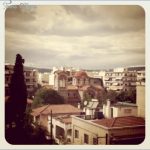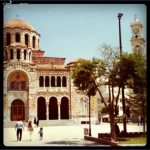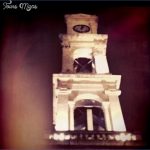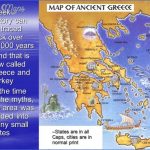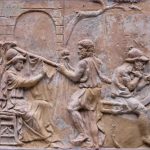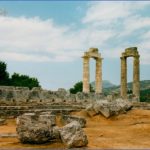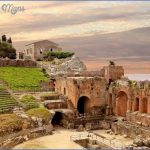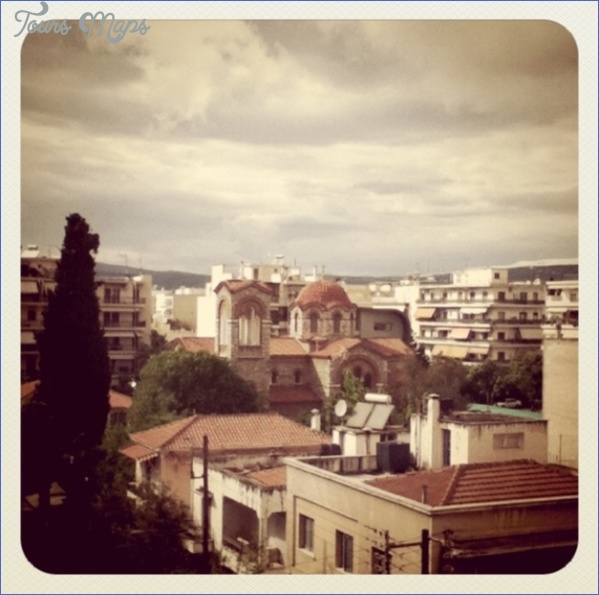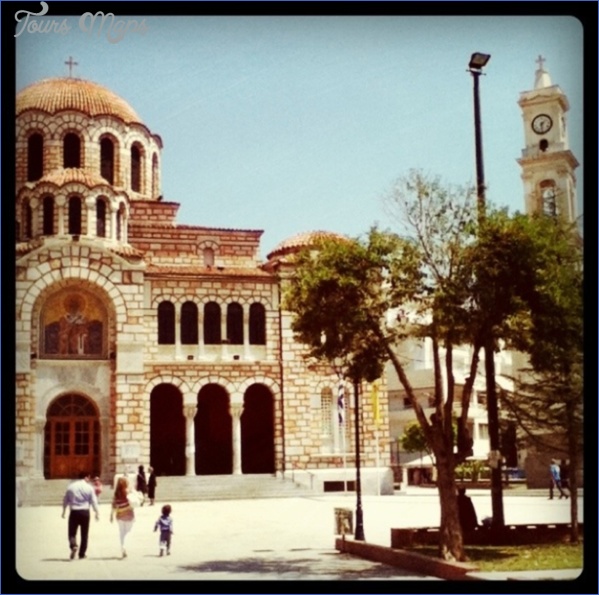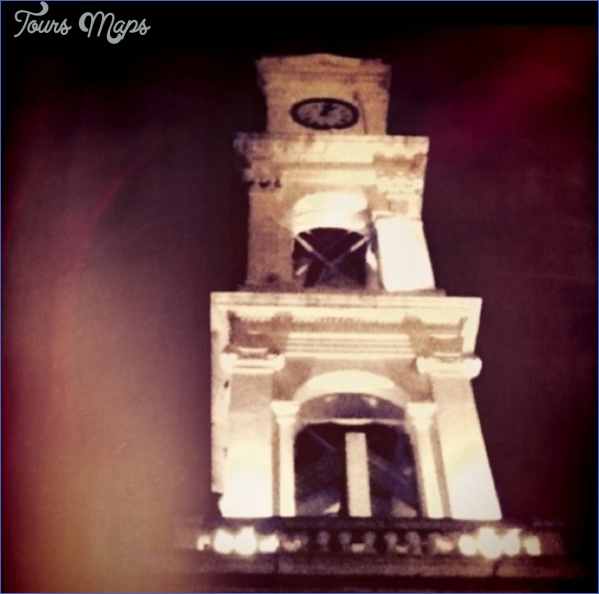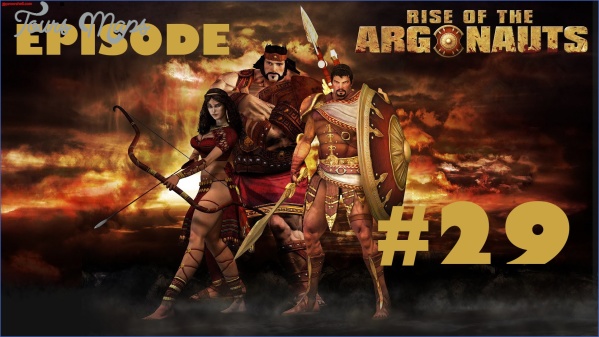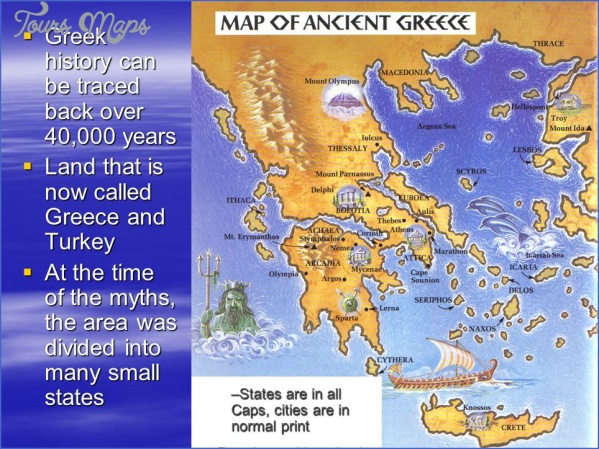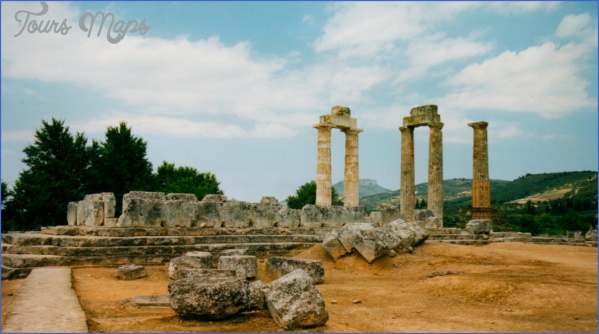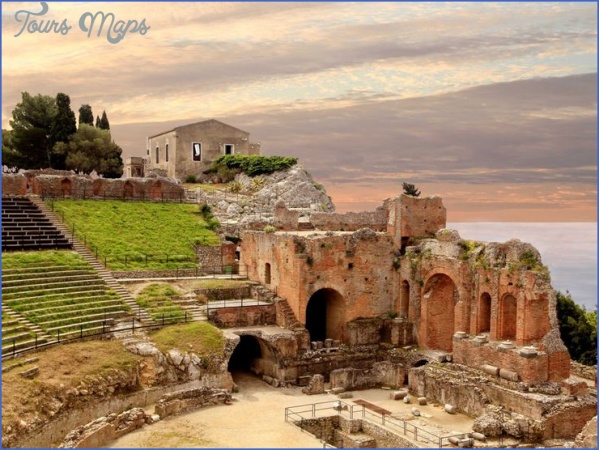The Mycenaean site at Dimini near \blos was first excavated at the end of the twentieth century. As a town and palace – the only Mycenaean palace in Thessaly – served by major roads, its importance soon became apparent. Finds of high-status imports from Syria and Asia Minor confirmed Dimini’s strong trading links, allowing archaeologists to identify it as mythological Iolcus. Dimini’s history stretches back much further. In the early fifth millennium bc a thriving Late Neolithic city was built on
the hilltop above what was then an inlet on the north coast of the Gulf of Pagasae. The settlement shows signs of contact with Sesklo, an even earlier agricultural town a few miles to the west, founded around 6500 bc, at its height supporting around 3,000 people. Dimini was perhaps a coastal colony of Sesklo. For four hundred years the two were occupied simultaneously, until Sesklo was abandoned around 4400 bc.
Late Neolithic Dimini thrived. Open public spaces suggest communal activity, while up to fifty mudbrick houses were built on stone foundations next to alleyways and encircling walls. A ceramic kiln produced temperatures as high as 850°C (1562°F). In time the settlement shrank, until by around 3000 BC it was inhabited by one extended family and abandoned shortly afterwards. In the second millennium bc, the site was used as a cemetery.
It was fully reoccupied only in the fourteenth century BC, when the Mycenaean palace and city were constructed lower down the hill to the southeast. Within the Neolithic site was built one of two tholos tombs discovered so far, the other being slightly further off to the west. Meanwhile the walls and floor of the palace’s megaron were covered in white plaster, with two wings (the north residential, the south containing workshops and store rooms) joined by a corridor. It was destroyed (perhaps accidentally) in the late thirteenth century BC and replaced by a bipartite palace, its walls lined with clay, with a raised clay altar near its entranceway. This palace was destroyed by fire around 1200 BC. Neither phase seems to have had protective walls, making the site vulnerable, particularly from the sea.
This time Dimini was not reoccupied. With the coastline now some miles to the south, later settlements (including Demetrias, founded by Demetrius the Besieger at the end of the fourth century bc) were closer to – or on – the site of modern Volos, of which Dimini is now a suburb.
Excavations began in 1886 when archaeologists dug the tholos tomb called ‘Lamiospito’ (‘Haunted House’). Enthusiastic reports appeared in American newspapers extolling finds of gold jewelry, which were ‘scarcely larger than a pin’s head, and yet leave nothing to be desired in beauty and finish’. They added that the discoveries ‘tend to the supposition that the population was seafaring’. Only six years later, historians wrote: ‘Here, by the tranquil waters of the Pagasetan Gulf, were learned [the Mycenaeans’] first lessons in navigation, ere they ventured on those distant and adventurous expeditions, whose remembrance is preserved in the Argonaut myth.’
Iolcus in History & Today Photo Gallery
Today Volos is a thriving port, whose quayside boasts a proud souvenir of its heroic past: a reconstruction of Jason’s Argo, and plans are afoot for a new ‘Argo Museum’.
Dimini lies on the outskirts of Volos, well signposted off the busy E92 leading into the city. The Mycenaean site (still being excavated and closed to the public) can be seen from the perimeter fence. Neolithic Dimini, however, with its six rings of low walls, narrow alleyways and houses, repays a visit. To the northwest is the (collapsed) Mycenaean ‘Lamiospito’ tholos. From here a path leads west to a second tholos (no access).
Sesklo is reached by a country road west from Dimini, beautifully sited in rolling hills. Covering a large area, the remains of houses built of stone, clay and mudbrick are made more comprehensible thanks to an audio guide.
Further inland is Pherae, with foundations of the Temple of Zeus Thaulios and the Hypereia Fountain, currently being excavated in modern Velestino, as well as remains of a stoa, walls, towers and a Temple of Heracles.
The Archaeological Museum of Volos contains material from the Neolithic period and Bronze Age grave goods (including gold jewelry and a charming clay model of a chariot with two horses). Reconstructions of burials set objects in context. Pottery sherds bear the image of a Mycenaean ship. Perhaps most stunning are the third- to second-century BC painted grave stelai, with miraculously well-preserved colours, showing scenes of the dead taking leave of the living. One includes a poignant inscription addressing Minos and Rhadamanthus, the judges in Hades, which may remind visitors of Admetus mourning his wife Alcestis:
Minos and Rhadamanthus! If ever you judged another woman to be virtuous, judge Aristomachus’ daughter to be virtuous, too. Convey her to the Islands of the Blessed, for she was beautiful and pious. Tylisus in Crete brought her to womanhood, but now this land embraces her. Your fate, Archidice, has made you immortal.
Maybe You Like Them Too
- Theseus & Peirithous
- The Voyage of the Argo Begins
- Minos, his Loves & his Family
- The Centaurs
- Athens in History & Today

